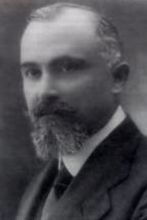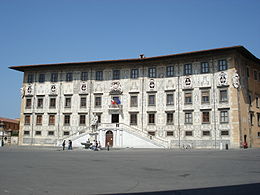
The Scuola Normale Superiore in Pisa is a public university institution in Pisa and Florence, Tuscany, Italy, currently attended by about 600 undergraduate and postgraduate (PhD) students.
Education in Italy is compulsory from 6 to 16 years of age, and is divided into five stages: kindergarten, primary school, lower secondary school, upper secondary school and university (università). Education is free in Italy and free education is available to children of all nationalities who are residents in Italy. Italy has both a private and public education system.
In Italy, the laurea is the main post-secondary academic degree. The name originally referred literally to the laurel wreath, since ancient times a sign of honor and now worn by Italian students right after their official graduation ceremony and sometimes during the graduation party. A graduate is known as a laureato, literally "crowned with laurel."
The dottorato di ricerca is the highest Italian academic degree, the equivalent of a Ph.D.
The Sant'Anna School of Advanced Studies is a special-statute, highly selective public research university located in Pisa, Italy.

Higher education in Italy is mainly provided by a large and international network of public and state affiliated universities. State-run universities of Italy are under the supervision of Italian's Ministry of Education. There is also a number of private universities and state-run post-secondary educational centers providing a vocational instruction.

The Pisa University System is a network of higher education institutions in Pisa, Italy. The following three schools and universities belong to the system:

Liceo scientifico is a type of secondary school in Italy. It is designed to give students the skills to progress to any university or higher educational institution. Students can attend the liceo scientifico after successfully completing middle school.
The Scuola Superiore IUSS or the "Istituto Universitario di Studi Superiori" of Pavia is a higher learning institute located in Pavia, Italy.
The Consorzio ICoN is an interuniversity consortium for Italian Studies established in 1999. It consists of 21 Italian universities and focuses on philology and cultural studies. The consortium is based and administrated at the University of Pisa and is supported by the Italian Ministry of University and Research. It aims at diffusing Italian language, culture and literature.
Francesco Maria Gerard Vito was an Italian economist and university rector.
Sergio Campanato was an Italian mathematician who studied the theory of regularity for elliptic and parabolic partial differential equations.

Alessandro Faedo was an Italian mathematician and politician, born in Chiampo. He is known for his work in numerical analysis, leading to the Faedo–Galerkin method: he was one of the pupils of Leonida Tonelli and, after his death, he succeeded him on the chair of mathematical analysis at the University of Pisa, becoming dean of the faculty of sciences and then rector and exerting a strong positive influence on the development of the university.

Medea Vittoria Irma Norsa (1877–1952) was an Italian papyrologist and philologist. She headed the Istituto Papirologico Girolamo Vitelli in Florence from 1935 to 1949.

Orazio Tedone was an Italian mathematical physicist. He is perhaps best known for the Larmor–Tedone formulae for solving Maxwell's equations.

Onorato Nicoletti was an Italian mathematician.

The Liceo statale "Niccolò Machiavelli" is a high school named after Niccolò Machiavelli located in the historic Oltrarno quarter of Florence, Italy. In the 2020 academic year it offered the secondary schools Liceo classico, Liceo delle Scienze Umane, Liceo Linguistico and Liceo Scientifico. It has a student population of over 1700, making it the second largest high school in the province. Initially based in the Fortezza da Basso, the school was moved Palazzo Rinuccini, in Via S. Spirito, in 2004. The branch of the school housing the international linguistic and international scientific departments is located in Palazzo Frescobaldi, also known as Della Missione. It is one of the oldest Italian normal schools for girls and has hosted the courses of one of the two Royal Higher Education Institutes.
Maria Timpanaro Cardini (1890–1978), born Maria Cardini, was an Italian philologist who studied the history of ancient philosophy and history of science.

Luigi Arialdo Radicati di Bròzolo was an Italian theoretical physicist










